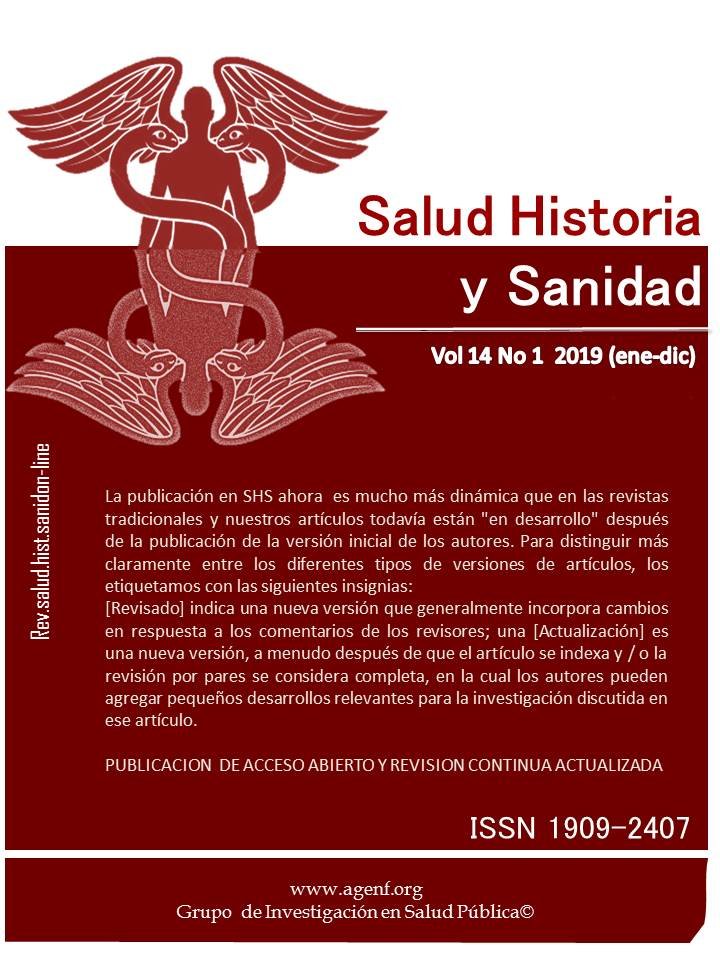Abstract
The coordinating capacity of balance has been highly addressed in recent years, mainly in proprioceptive programmers,
comparative and correlational studies in various fields: healthy adults, prevention and recovery of injuries, mechanisms for maintaining and restoring balance, among others. There are many gaps in the sports field, since it is a highly moldable capacity that generates specific adaptations according to the type of sport practiced. The objective of this review is to make a general compendium of the state of research of this coordination capacity approached from the motor action in general population
and sport as well as the diverse factors that influence it, as the muscular relations, genetic conditions, systems of maintenance and recovery of the balance, sport modality and laterality. Revealing data were found such as that the activation of muscle chains vary according to the degrees of the joints in function of the specificity of the sport in relation to the balance, that the strategies of maintenance and recovery of the balance vary not only between sports disciplines but also between the function of the athlete within the same sport, as well as that these strategies
differ between the dominant and non-dominant leg in the same athlete.
References
Anderson, G. S., Deluigi, F., Belli, G., Tentoni, C., & Gaetz, M. B. (2016). Training for improved neuro-muscular control of balance in middle aged females. Journal of Bodywork and Movement Therapies, 20(1), 10-18.
Antosiak-Cyrak, K. Z., Wiczyński, G., & Rostkowska, E. M. (2015). Laterality of the legs in young female soccer players. Human Movement, 16(4), 189-194.
Ateş, B. (2017a). Investigation of static and dynamic balance performances of female student-athletes and non-athletes between 12 and 14 years of age. Journal of Physical Education and Sport Science, 11, 1-8.
Avella, R., Maldonado, C., & Ramos, S. (2015). Entrenamiento Deportivo Con Niños - Librería Deportiva. Recuperado 23 de junio de 2018, de https://www.libreriadeportiva.com/libro/entrenamiento-deportivo-con-ninos_69778
Baccouch, R., Rebai, H., & Sahli, S. (2015). Kung-fu versus swimming training and the effects on balance abilities in young adolescents. Physical Therapy in Sport: Official Journal of the Association of Chartered Physiotherapists in Sports Medicine, 16(4), 349-354.
Carroll, C. (2013). Assessment of Balance in Collegiate Cheerleaders: Is Implementing a Balance Training Program a Good Idea? 9.
Cha, H. G., Lee, B. J., & Lee, W. H. (2016). The effects of horse riding simulation exercise with blindfolding on healthy subjects’ balance and gait. Journal of Physical Therapy Science, 28(11), 3165-3167.
Chuter, V. H., de Jonge, X. A. K. J., Thompson, B. M., & Callister, R. (2015). The efficacy of a supervised and a home-based core strengthening programme in adults with poor core stability: A three-arm randomised controlled trial. British Journal of Sports Medicine, 49(6), 395-399.
Cone, B. L., Levy, S. S., & Goble, D. J. (2015). Wii Fit exer-game training improves sensory weighting and dynamic balance in healthy young adults. Gait & Posture, 41(2), 711-715.
Cuğ, M., Duncan, A., & Wikstrom, E. (2016). Comparative Effects of Different Balance-Training-Progression Styles on Postural Control and Ankle Force Production: A Randomized Controlled Trial. Journal of Athletic Training, 51(2), 101-110.
Dunsky, A., Barzilay, I., & Fox, O. (2017). Effect of a specialized injury prevention program on static balance, dynamic balance and kicking accuracy of young soccer players. World Journal of Orthopedics, 8(4), 317-321.
Eider, P. (2015). Changes in motor skills of children who train sports swimming at the initial stage of school education (in annual training cycle). Pedagogics, Psychology, Medical-Biological Problems of Physical Training and Sports, 19(12), 109-119.
Freyler, K., Krause, A., Gollhofer, A., & Ritzmann, R. (2016). Specific Stimuli Induce Specific Adaptations: Sensorimotor Training vs. Reactive Balance Training. PLOS ONE, 11(12), e0167557. https://doi.org/10.1371/journal.pone.0167557
Karakaya, M. G., Rutbİl, Hi., Akpinar, E., Yildirim, A., & Karakaya, İ. Ç. (2015). Effect of ankle proprioceptive training on static body balance. Journal of Physical Therapy Science, 27(10), 3299-3302.
Kim, K.-J., & Heo, M. (2015). Effects of virtual reality programs on balance in functional ankle instability. Journal of Physical Therapy Science, 27(10), 3097-3101.
Lee, A. C., & Kuang, P. F. (2016). The effectiveness of sports specific balance training program in reducing risk of ankle sprain in basketball [Text].
Nam, H.-C., Cha, H.-G., & Kim, M.-K. (2016). The effects of exercising on an unstable surface on the gait and balance ability of normal adults. Journal of Physical Therapy Science, 28(7), 2102-2104.
Park, J.-M., Hyun, G.-S., & Jee, Y.-S. (2016). Effects of Pilates core stability exercises on the balance abilities of archers. Journal of Exercise Rehabilitation, 12(6), 553-558.
Promsri, A., Haid, T., & Federolf, P. (2018). How does lower limb dominance influence postural control movements during single leg stance? Human Movement Science, 58, 165-174.
Sankaravel, M., Lee, J. L. F., Boon, O. K., & Jeganathan, S. (2016). Effect of neuromuscular training on balance among university athletes. International Journal of Physiotherapy, 3(3), 385-389.
Silva, P. de B., Mrachacz-Kersting, N., Oliveira, A. S., & Kersting, U. G. (2018). Effect of wobble board training on movement strategies to maintain equilibrium on unstable surfaces. Human Movement Science, 58, 231-238.
Tae-Gyu, K., & Jong-Chul, P. (2015). Relationship between Balance and Isokinetic Strength of Ankle Joint by Playing Position of Elite Female Field Hockey Players. Indian Journal of Science and Technology, 8(19).
Thompson, L. A., Badache, M., Cale, S., Behera, L., & Zhang, N. (2017). Balance Performance as Observed by Center-of-Pressure Parameter Characteristics in Male Soccer Athletes and Non-Athletes. Sports, 5(4), 86.
Wang, H., Ji, Z., Jiang, G., Liu, W., & Jiao, X. (2016). Correlation among proprioception, muscle strength, and balance. Journal of Physical Therapy Science, 28(12), 3468-3472.
Williams B Murray N, & Powel D. (2016). Athletes who train on unstable compared to stable surfaces exhibit unique postural control strategies in response to balance perturbations—ScienceDirect. Recuperado 28 de junio de 2018, de https://www.sciencedirect.com/science/article/pii/S2095254616000119
Yong, M.-S., & Lee, Y.-S. (2017). Effect of ankle proprioceptive exercise on static and dynamic balance in normal adults. Journal of Physical Therapy Science, 29(2), 242-244.

This work is licensed under a Creative Commons Attribution-NonCommercial-NoDerivatives 4.0 International License.
Copyright (c) 2020 REVISTA SALUD, HISTORIA Y SANIDAD
